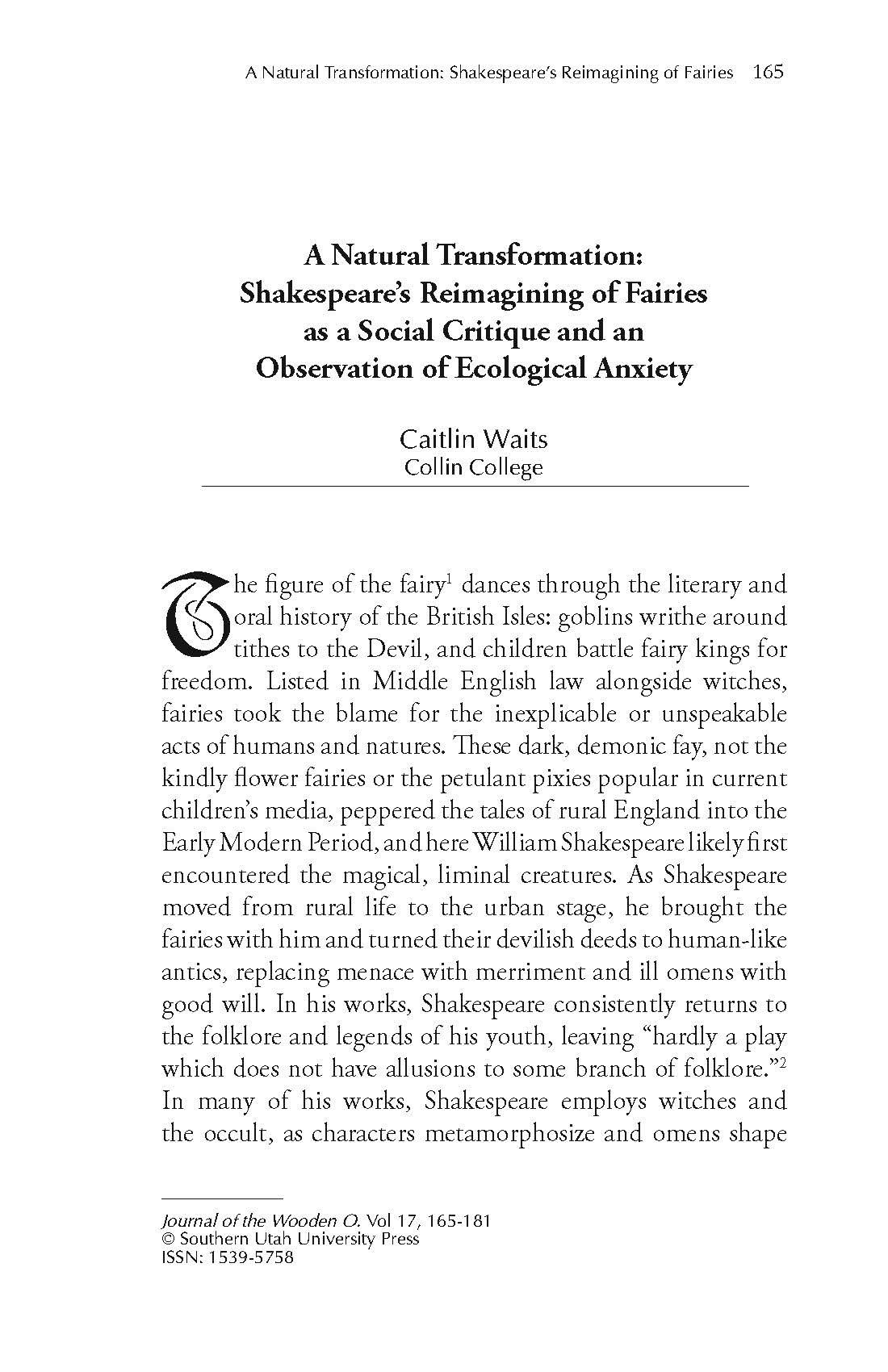A Natural Transformation: Shakespeare’s Reimagining of Fairies as a Social Critique and an Observation of Ecological Anxiety
Main Article Content
Abstract
The figure of the fairy1 dances through the literary and oral history of the British Isles: goblins writhe around tithes to the Devil, and children battle fairy kings for freedom. Listed in Middle English law alongside witches, fairies took the blame for the inexplicable or unspeakable acts of humans and natures. These dark, demonic fay, not the kindly flower fairies or the petulant pixies popular in current children’s media, peppered the tales of rural England into the Early Modern Period, and here William Shakespeare likely first encountered the magical, liminal creatures. As Shakespeare moved from rural life to the urban stage, he brought the fairies with him and turned their devilish deeds to human-like antics, replacing menace with merriment and ill omens with good will. In his works, Shakespeare consistently returns to the folklore and legends of his youth, leaving “hardly a play which does not have allusions to some branch of folklore.”2 In many of his works, Shakespeare employs witches and the occult, as characters metamorphosize and omens shape narrative, thus driving action. Fairies themselves feature most prominently in A Midsummer Night’s Dream (c. 1595) and The Tempest (c. 1610), as Oberon, Titania, Puck, and Ariel all appear on stage. Meanwhile, a colorful description of Queen Mab in Romeo and Juliet (c. 1591) also provides useful fodder for Shakespeare’s transformation of the fairy folk and later interpretations of the fay. In commercializing, shrinking, and then disembodying his fairies, Shakespeare comments on the excess wealth of the nobles and upper-class Elizabethans, as well as the growing disconnect with nature, while opening up the fairy world for future writers and poets.
